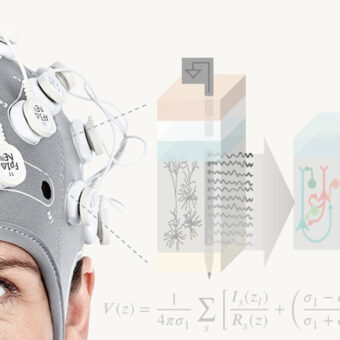When Archimedes, one of the greatest scientists and mathematicians of Ancient Greece, was tasked with determining whether his king’s crown was made of pure gold, he was stumped. He decided to ponder this task over a warm bath, as one does. After entering the water and noticing how it rose based on the volume of his body, he discovered how to measure the volume of an irregular object. He thought he solved the king’s task and excitedly ran home nude exclaiming “Eureka!” and the term has been popularized ever since.
Though this story is likely fictional, the experience is not. In fact, there is a high chance that you have experienced what psychologists call the Eureka! effect, or the sudden comprehension of a previous unsolved problem. And humans are not alone in this experience: pigeons and chimpanzees have both been documented to exhibit this effect. However, this ubiquitous experience is poorly understood and researchers have yet to discern how “Eureka!” manifests itself in the brain.
Researchers Emiliano Santarnecchi and Giulia Sprugnoli attempted to tackle this question in their most recent publication titled “Gamma tACS over the temporal lobe increases the occurrence of Eureka! moments”. By studying 31 Sicilian subjects through two different insight tasks, they sought to determine the neural substrates of a Eureka! moment and if this moment can be enhanced with noninvasive stimulation, namely transcranial alternating current stimulation (tACS). The two insight tasks included the Compound Remote Associate problems (CRA) task, which measures verbal insight, and the Rebus Puzzles task, which tests for visuo-spatial insight. These two tasks measure different forms of insight, which tests for Eureka! moments, to see if distinct brains regions handle insight differently.
Speaking of specific brain regions, prior research has validated that there is a region-specific burst of gamma band activity, which is essential for insight and cognition, right before a correct, insight-based solution to a problem. Additionally, this burst is preceded by a neighboring burst in alpha band activity, which is linked to focus and the visual cortex. So researchers already knew that some coordinated synchrony between these bands plays a role in achieving Eureka! But to what degree do these bands affect this outcome? This is where tACS comes in.

tACS functions by oscillating current at a specific frequency to influence the brain’s natural oscillatory network. This helps to entrain local neuronal activity, which can ultimately lead to neuroplasticity of cortical regions. Therefore, the researchers wanted to test if by stimulating the specific areas of the brain where the gamma and alpha bursts occur, there is an elevated Eureka! aftereffect compared to sham trials (or the control). And what they found was remarkable: stimulation at the gamma band frequency in relevant brains areas improved one’s performance in the CRA insight task by about 20%. Interestingly, there was no improvement in the Rebus Puzzles task, suggesting that visuo-spatial insight is handled somewhere else in the brain than where the researchers stimulated.
Not only did the results suggest the importance of gamma oscillations in verbal insight, but also demonstrated that insight can likely be enhanced through stimulation. Cognitive enhancement sounds like it is just around the corner – imagine a world where we have Eureka! moments every day!
This research was conducted with our Starstim system, which allows for various forms of transcranial current stimulation in tandem with EEG. Click here to check out history’s greatest Eureka! moments or here to read this paper.

Reference:
Santarnecchi, E. et al. Gamma tACS over the temporal lobe increases the occurrence of Eureka! moments. Scientific Reports 9, Article number: 5778 (2019).



